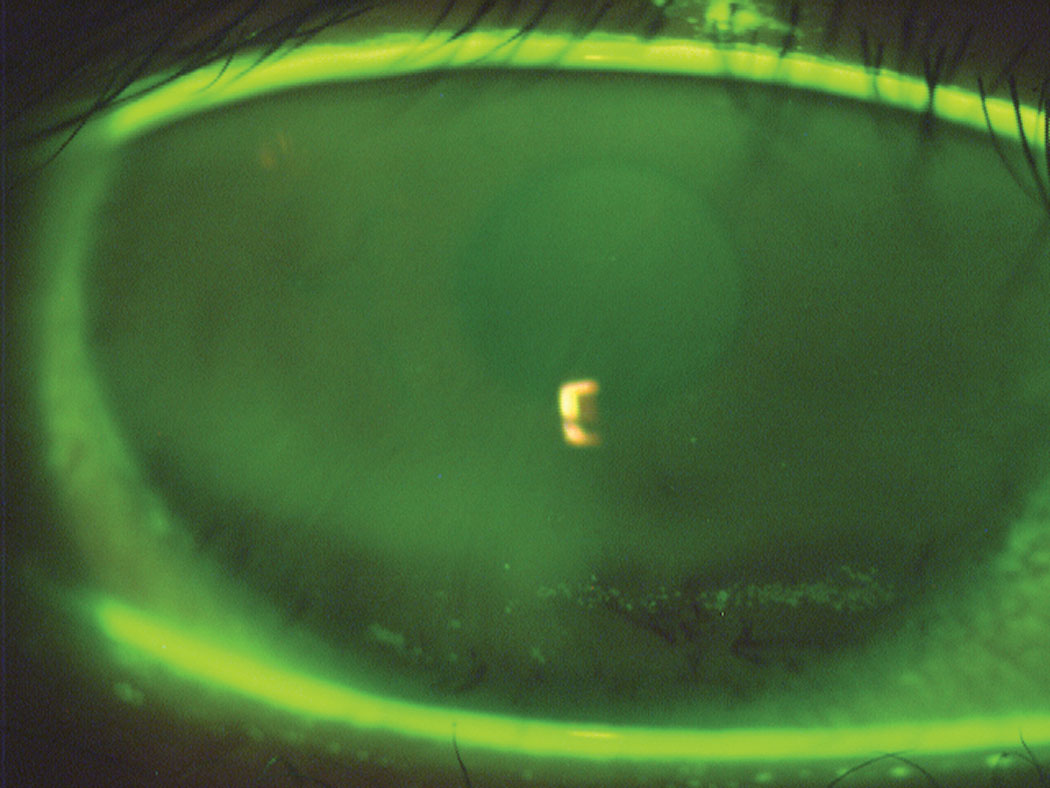Editor’s Note: As part of our “Year in Review” retrospective, we’ve selected the top 30 news stories of the year and are re-sharing them as we close out 2022. Follow along as we count down to number 1!
This story was originally published on October 20, 2022.
 |
|
This image depicts inferior dehydration staining due to incomplete blinking. The darker horizontal band in the stained area corresponds to the turning point of the lid between the downward and upward motion of the blink. Photo: The Centre for Ocular Research & Education. Click image to enlarge. |
Ocular surface changes and dry eye are common after cataract surgery, and so are changes in blinking pattern, according to a recently published study in the Journal of Cataract and Refractive Surgery. In the observational clinical study, researchers evaluated the blinking of 50 patients with senile cataract preoperatively and at one and three months after phacoemulsification. They used an eye-tracking device to record blinks for 90 seconds and image analysis to determine blink rate, number of complete and incomplete blinks, percentage of incomplete blinks and kinematic parameters such as amplitude, closing, contact, opening, total durations and closing and opening speeds.
The researchers reported the blink rate was significantly lower at the third visit (15 blinks/min) compared with baseline (20 blinks/min). At three months, patients also had significantly fewer complete blinks (5/min vs. 10/min at baseline) and a significantly greater percentage of incomplete blinks (78%) compared with baseline (61%). The researchers reported no differences in the number of incomplete blinks or in any kinematic parameter between visits.
There were no observed blinking differences one month after surgery. One possible explanation for this may be reflex blinking and loss of corneal sensitivity, the researchers noted in their paper. A previous study reported that blink frequency after cataract surgery was associated with tear stability, with blinking increasing when the tear film was unstable.
“The short-term induced dryness and tear film abnormalities associated with cataract surgery may have stimulated the ocular surface and subsequently motivated reflex blinking, preventing a reduction in the blink rate due to a loss in corneal sensitivity during the first weeks after surgery,” they wrote in their paper.
Talens-Estarelles C, Amparo Díez-Ajenjo M, Pons AM, et al. Effects of cataract surgery on blinking. J Cataract Refract Surg. October 17, 2022. [Epub ahead of print]. |


